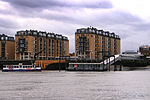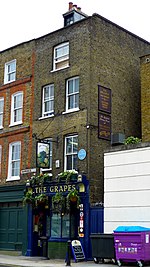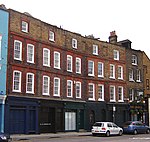Nelson House, London
Buildings and structures on the River ThamesGeorgian architecture in LondonGrade II* listed buildings in the London Borough of SouthwarkGrade II* listed houses in LondonGrade II* listed office buildings ... and 3 more
Houses in the London Borough of SouthwarkRotherhitheUse British English from March 2020

Nelson House, also known as Nelson Dock House, is a Grade II* listed building on Rotherhithe Street in the London Borough of Southwark. The house was built in the 1740s in the Georgian style and was historically home to shipbuilders including John Randall. The house is named after Horatio Nelson, 1st Viscount Nelson.
Excerpt from the Wikipedia article Nelson House, London (License: CC BY-SA 3.0, Authors, Images).Nelson House, London
Rotherhithe Street, London Rotherhithe (London Borough of Southwark)
Geographical coordinates (GPS) Address Website Nearby Places Show on map
Geographical coordinates (GPS)
| Latitude | Longitude |
|---|---|
| N 51.504444444444 ° | E -0.033888888888889 ° |
Address
DoubleTree by Hilton Hotel London - Docklands Riverside
Rotherhithe Street 265A
SE16 5HW London, Rotherhithe (London Borough of Southwark)
England, United Kingdom
Open on Google Maps










